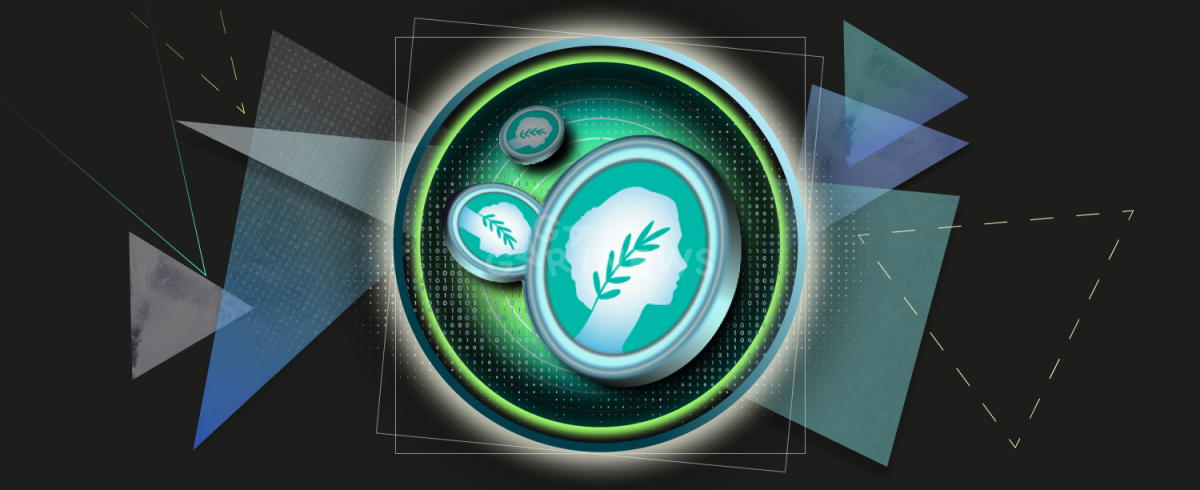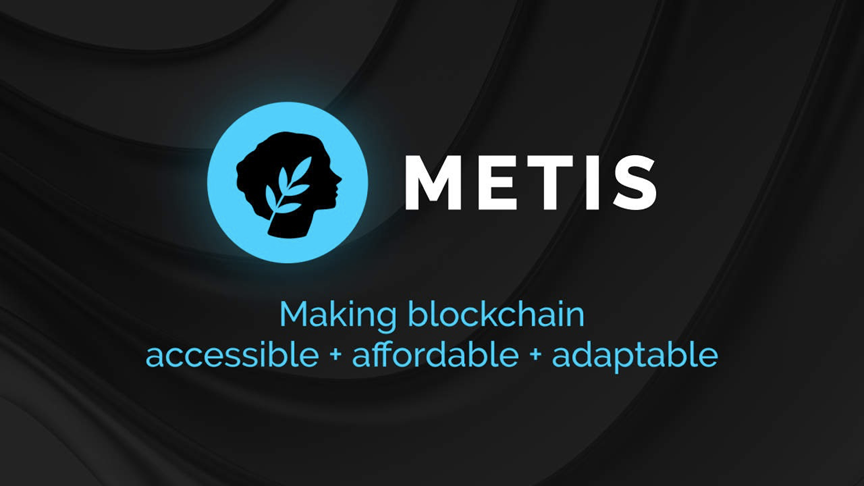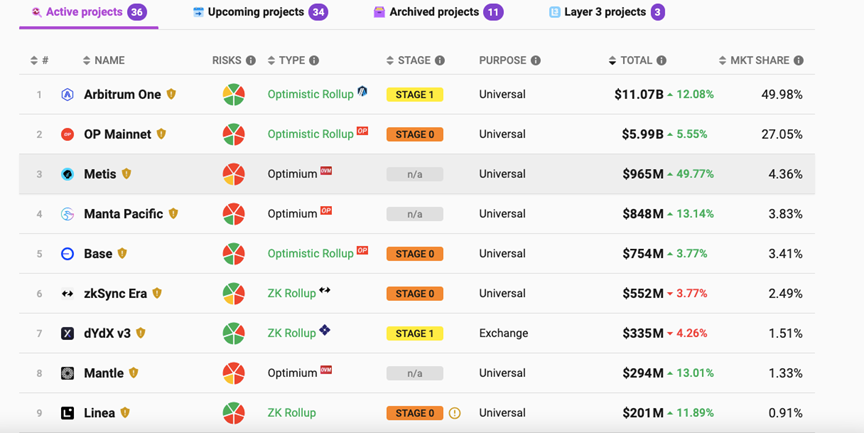Author: Daniel Li, CoinVoice

The Ethereum ecosystem has always faced scalability challenges, and the rise of Metis is bringing a brand new solution to this problem. As a rising star in the Ethereum Layer 2 scaling solution, Metis has recently achieved remarkable success, especially with its plan to launch the first decentralized PoS sequencer in the first quarter of 2024, which has attracted significant market attention.
The market generally has a positive outlook on the future prospects of Metis, which is reflected in its token, METIS. As the native token of Metis and also the Gas Token of the Metis network, METIS has surged by over 800% in just the past three months. Metis's Total Value Locked (TVL) has surpassed similar projects twice, making it the third largest Layer 2 network after Arbitrum and Optimism.
The rapid rise of Metis is not accidental. In addition to the decentralized PoS sequencer and Gas Token, the efforts of the project team have also played a significant role. On December 18th, the MetisDAO development organization, MetisDAO Foundation, announced the establishment of a $110 million ecosystem development fund, further enhancing the efficiency and transparency of the Metis network, while also bringing new development opportunities to its ecosystem.

Metis' 8-fold surge in three months sparks heated discussion
With the launch of the Ethereum Cancun upgrade, the market's attention has temporarily shifted from Bitcoin spot ETFs to the layer2 market. Among the many star layer2 tokens, METIS has stood out with its astonishing surge, rising from $15 in early October to a peak of $120, with a surge of over 800%, making it the most eye-catching dark horse in the current layer2 market.
In addition to the token price surge, Metis's Total Value Locked (TVL) has also experienced rapid growth, surpassing Base twice in the past two months. According to L2BEAT data, as of January 17th, Metis's TVL has exceeded $960 million, with a growth of over 50% in the past 7 days, making it the third layer2 network to break through the $1 billion market value.

Metis's astonishing surge has sparked strong market attention, but it has also brought some controversy. In fact, just three months ago, Metis was just a layer2 solution based on Optimistic Rollup, with much less visibility compared to L2 networks such as Arbitrum, Optimism, and Base, and even less than zkSync, Starknet, and Linea.
Therefore, some investors believe that there may be manipulation by market makers or liquidity providers behind the surge of Metis. According to an on-chain data analyst, 11 addresses have been suspected of being market makers or liquidity providers for Metis in the past period. These addresses have deposited a large amount of METIS tokens, and their buying and transferring behaviors are highly consistent with the fluctuation of METIS token prices. In addition, the well-known liquidity provider DWF Labs has also participated in the trading of METIS tokens, acquiring a significant profit after purchasing a large amount of tokens at a lower price and seeing the token price rise. This fact further supports the possibility of the involvement of market makers or liquidity providers in the surge of METIS tokens.
Despite the suspicion of market manipulation, as a rising star in the layer2 space, Metis's innovative development concept and technical advantages have also gained significant market recognition. The continuous growth of the METIS price indicates that investors still hold an optimistic view of its future trend. It is worth noting that METIS has not yet been listed on Binance, which means it still has the potential for further growth in the future.
Metis: Innovator of Decentralized PoS Sequencer
The decentralized sequencer is the core concept of Layer2 Rollup and is of great significance for achieving the native DeFi and ecosystem explosion of Layer2. Although Layer2 has made significant progress in the past few years and many innovative projects have emerged, progress in decentralized sequencers has been relatively slow. Especially for large-scale public chains, they are often reluctant to change the status quo. This is because the rush to promote decentralized sequencers may potentially pose a crisis and challenge to the entire Layer2 ecosystem, directly affecting the revenue of project parties. Therefore, even the leading Layer2 public chains in the industry, such as Arbitrum and Optimism, still use centralized sequencers.
However, the concept of blockchain tells us that decentralization is the future direction. Traditional centralized sequencers organize and package a large number of transactions into a batch and submit them to Layer1 for confirmation to achieve high performance and low fees for Layer2. However, centralization cannot avoid the risk of single-point malfeasance or failure. Therefore, it is imperative to achieve decentralized sequencers for Layer2, and in this regard, Metis is ahead of all Layer2 public chains.
Metis is one of the first to practice decentralized PoS sequencers in Layer2 networks, providing a template for future development. This template not only achieves the decentralization of the sequencer but also provides a decentralized Optimistic Rollup solution based on PoS (Proof of Stake). In this template, Metis's decentralized PoS sequencer consists of three main roles: administrators, sequencers, and PoS consensus layer.

Administrators are the managers of the decentralized system of Metis, responsible for managing the operation of the entire system. They set rules, decide which sequencers can participate in transaction sequencing and processing, and control the speed of transaction processing, etc.
The sequencer pool is the core of the system, consisting of a group of verified sequencers. Each sequencer has different tasks. One important sequencer is L2 Geth, responsible for sequencing and packaging transactions into blocks. There is also an adapter module for interacting with other systems. In addition, there is a role called Proposer, responsible for submitting processed transactions in batches to another system.
The PoS consensus layer exists independently of Metis and is responsible for managing the signing permissions between sequencers. When it is necessary to submit a batch of transactions, confirmation by over half of the sequencers is required to consider the batch as valid. The consensus layer manages the joining and exiting of sequencers and ensures the secure redistribution of signing permissions.
To ensure the normal operation of the system, Metis's decentralized PoS sequencer adopts a Staking incentive mechanism. The operators of the sequencer pool and the operators of the consensus layer nodes need to stake a certain amount of tokens as collateral. If a sequencer engages in dishonest behavior during transaction processing, others can raise a challenge. If the challenge is successful, the sequencer will lose part of the stake. In addition, to attract more participants, the Metis ecosystem will also launch some Staking dApps to serve ordinary users who do not have enough funds to enter the sequencer pool. In this way, a widely participated, transparently regulated, and beneficial decentralized PoS sequencer execution framework is on the horizon.
Currently, Metis's decentralized PoS sequencer has been tested on the Sepolia testnet and the community test was launched on January 3, 2024. Participants can earn points through testing dApps, Learn to Earn, etc., and different levels of points will receive different types of NFT rewards. Through the obtained NFTs, participants will have the opportunity to receive airdrop rewards for the community test. Metis actively encourages broad community participation to better test the stability of the network, discover and fix potential issues, and further improve the decentralized PoS sequencer solution.
Innovative Layout of Metis Ecosystem
Attracting more developers to join the ecosystem, building new projects, and continuously innovating are the challenges that all public chain development ecosystems need to face. In the past layer2 battles, various Layer 2 projects have used their respective advantages to attract users. For example, Optimism attracted a large number of users through multiple rounds of airdrops and then gradually built its own superchain universe using the open-source component OP Stack. Arbitrum actively introduced top DeFi projects such as Uniswap, Aave, Curve, 1inch, and attracted a large number of users.
Compared to these well-established old-school layer2 projects with strong backgrounds and capabilities, Metis has attracted a large number of developers and projects to join the Metis ecosystem more by relying on its own technical advantages and understanding the psychology of users.
First, in terms of fees, with the clever design of Hybrid Rollups, the transaction experience in the Metis ecosystem is both efficient and secure. In addition, Metis has integrated a decentralized storage MemoLabs, which makes its transaction fees tens of times lower compared to Optimism and Arbitrum, with ETH transfers costing less than $0.01. Although in the future, as Metis switches the DA layer to the ETH mainnet, transaction fees may increase, they will still remain within a low range, and transaction security will be further enhanced.

Secondly, Metis focuses on understanding the psychological needs of users and uses various methods to attract users and projects to enter the ecosystem. Metis has conducted a large number of airdrop activities and launched community tests for the decentralized PoS sequencer, providing generous rewards to community members actively participating in the tests. In addition, Metis has launched the Metis Advocate Program, which rewards community members who identify with Metis' development concept and have content creation capabilities and social media influence.
Furthermore, Metis places great emphasis on the developer experience. Metis retains the Optimistic Rollup architecture, provides EVM equivalence, and enables a large number of Ethereum developers to easily join the ecosystem. In addition, Metis provides detailed technical documentation, development tutorials, and related technical tools, and has established a developer community to promote technical exchange and learning. Metis also supports developers through bug bounty programs and hackathon activities, providing funding, technical support, and marketing support.
Currently, the Metis ecosystem has over 100+ applications, covering DeFi, wallets, NFTs, and other sectors, including well-known DeFi applications such as Aave, SushiSwap, and Stargate. From an obscure layer2 public chain to the third largest layer2 public chain, ranking just below Arbitrum and Optimism, Metis' rise has opened a new path for the long-term competition between the OP and ZK systems in the Ethereum layer2 track. Through technology, incentives, and a firm decentralized philosophy, Metis may open a new narrative in the upcoming bull market.
免责声明:本文章仅代表作者个人观点,不代表本平台的立场和观点。本文章仅供信息分享,不构成对任何人的任何投资建议。用户与作者之间的任何争议,与本平台无关。如网页中刊载的文章或图片涉及侵权,请提供相关的权利证明和身份证明发送邮件到support@aicoin.com,本平台相关工作人员将会进行核查。




